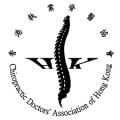Just 4 weeks of chiropractic adjustment stimulating proprioception helps people deal with physical pain and annoying dizziness, according to a new case report at Oxford Medical Case Reports.
Neck muscles have numerous interactions with balance and visual centers. Neck problems can alter orientation in space and cause a disturbance of equilibrium. Cervicogenic dizziness is the dizziness associated neck pain and cervical disorders.
A 24-year-old office worker suffered from intermittent neck pain and dizziness for 2 years. She sought help at New York Medical Group and experienced dizziness by moving her head in different motion. All her blood tests, X-rays and MRI could not confirm her symptoms and medication only provided partial relief.
“Cervicogenic dizziness is a seemingly simple complaint for many working adults, but it can be a controversial diagnosis because there are no specific tests for doctors to use,” says corresponding author Eric Chun-Pu Chu, chairman of Chiropractic Doctors Association of Hong Kong and author of the study.
The sensory inputs from the neck play an important role in head-eye coordination and postural processes. For example, fish do not have necks and their head and trunk move as one unit in one direction without dizziness. But human has a highly developed sensory system to receive signals and move our trunk. Neck proprioception provides the necessary information about head movements relative to the trunk.
Determining the cause of dizziness is crucial to tailoring the most appropriate treatment protocol. Ruling out neurovascular etiologies is equally important before starting the manual therapy to prevent any untoward events in dizziness.
Chiropractic adjustment has been shown to have benefits in treating many conditions such as headaches and numbness. But Chu and colleagues wanted to know whether a patient with cervicogenic dizziness might benefit from correction of neck posture.
Researchers tested the patient with cervical adjustment and thermal ultrasound therapy, with emphasis on restoring mobility to stiff joints and relieving muscle tightness. Restoration of the cervical curvature was demonstrable on cervical radiographs in the 7th month.
The effect of chiropractic adjustment and ultrasound therapy was effective enough, they found, that both pain and dizziness resolved after 4 weeks of treatments. Researchers found significant relationship between cervical pain and lordosis angle of < 20 degrees. After 18 months, the patient remained free of drugs and symptoms.
The stimulation of cervical proprioceptors and normalization of the afferent input were the result of manual therapy, the author noted.
“The resolution of neck pain or dizziness suggests there may be clinical benefits to chiropractic care in cervicogenic dizziness,” Chu says.
Source: Chiropractic Doctors Association of Hong Kong
Study: doi.org/10.1093/omcr/omz115
Dr Eric Chun-Pu Chu
Chairman@cda.org.hk
Chiropractic Doctors Association of Hong Kong















